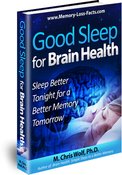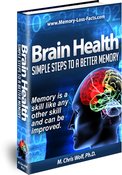Non Verbal Learning Disability:
Memory Effects
By M. Chris Wolf, PH.D.
Non Verbal Learning Disability (NVLD) refers to impairment in the ability of an individual to learn information, which is presented visually. Although people with these type of learning disorders tend to have exceptional ability to remember words and cite information by rote, theirmemory for non-verbal information, for example the meaning of facial expressions, is impaired because the brain of the person does not process this information.
Read Testimonials on Focus ADHDThe memory effects of a non verbal learning disability not only affect the person socially, but also in school and work settings. These types of learning disabilities are commonly misdiagnosed as Attention Deficit Hyperactivity Disorder or Asperger's Disorder. If one suspects a person has a non verbal learning disability, a neuropsychological evaluation is advised to avoid a mistake in diagnosis so effective treatment and rehabilitative interventions are implemented to lessen the effect of the learning disability on the person's daily life.
For information see Neuropsychological Testing
The Symptoms of a Non Verbal Learning Disability
A person with a visual learning disability tends to have difficulties in the following areas:
- Social: The person seems to have difficulty noticing body language, including facial expressions, gestures, and body posture, which impairs their ability to pick up on subtle social cues. The person will likely have difficulty making and keeping friendship and cooperating with others in the workplace due to their awkwardness in relating to others.
- Academic: The person has significant difficulty with reading, mathematics, organization, problem solving, handwriting, and reasoning. On the other hand, the person demonstrates strong auditory attention and verbal skills.
- Visual Spatial and Motor Skills: The person has difficulty remembering images and visual cues, such as landmarks and recognizing faces. The person might seem clumsy because of the person's difficulty perceiving the way things are situated spatially. The person appears uncoordinated and has difficulty with balance.
- Emotional: The person seems to be easily overwhelmed and frustrated, especially when in a new environment. The person tends to have issues with anxiety and depression (Liza Little, 1999).
When one looks at these symptoms, it is easy to see why these learning disabilities are commonly misdiagnosed, as the characteristics of NVLD are similar to other disorders and disabilities.
The Diagnosis
If one suspects they or a loved one has a NVLD, the person should seek an evaluation by a psychologist familiar with learning disabilities and other disorders, which affect memory, thought, and learning. The psychologist will conduct a comprehensive interview and administer a battery of tests. A NVLD diagnosis is made when there is a significant difference between the person's verbal IQ and performance IQ along with deficiencies on subscales related to visual spatial ability and non verbal memory. Based on the findings of the evaluation, the psychologist will recommend treatment interventions.
Reference
Liza Little, P. D. (1999, July). The Misunderstood Child: The child with a Non Verbal Learning Disability.
Also visit Brain Injury
See Brain Injury Symptoms
For more information about this topic consider these resources:
Read Testimonials on Focus ADHD
Go from Non Verbal Learning Disability to Causes of Memory Loss
OR
Memory Loss Facts
Our Sponsors


Get More Information on BrightSpark for Child ADD and ADHD


Click Here Now
LIKE THIS SITE?
Interested in having your own internet home based business?





